I have to be honest and admit that my first impression of Kitsune Tails didn’t have me fully on board with the premise. Perhaps it was the very obvious similarities with other platforming games or how the game expects a certain level of precision and mastery immediately. However, as I made my way through it, I started to experience a full 180 degrees change in attitude and discovered that not everything was as straightforward as it seemed.
Kitsune Tails is a platformer game cut from the same cloth as classics like Super Mario Bros 3 and Super Mario World, borrowing elements such as the way the level select maps look and the mid-world Spirit Houses that double as the mid-world castle challenges and Ghost Houses from SMW. Even the run meter from SMB3 makes an appearance as the Ki gauge in the upper right corner. I admittedly don’t love how close to this particular cloth Kitsune Games cuts. What I love is how this aspect of the game is only about 40% of the whole experience, and halfway through the developer pulled the wool from over my eyes and revealed that Kitsune Tails is also a completely different platformer closer to something like classic Ninja Gaiden.
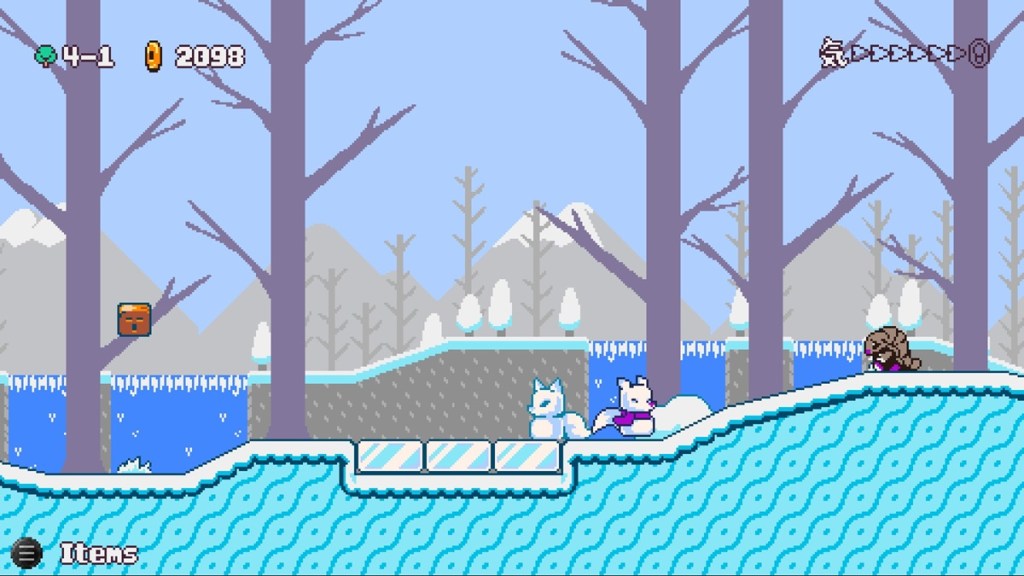
The story of Kitsune Tails is a tad more involved than is usual for the genre. If I had to summarize the plot in one sentence, it would be “clueless disaster lesbian Kitsune causes geopolitical crisis, and a disaster ensues.” The focus for most of the game lies on Yuzu, a Kitsune on her first mission as a messenger for the fox deity Inari. On one of her reckless travels, Yuzu is rescued by the mage and healer Akko, who rapidly catches feelings for our protagonist.
As the seasons go by and the two get closer, Yuzu’s longtime friend Kiri starts to show jealousy about the girls’ growing bond. Kiri is ready to make a grand gesture to reveal her feelings to Yuzu during a dance festival. In the ensuing confusion Akko is captured, with Kiri as the main suspect. Yuzu embarks on a trip to commune with the five elements to free Akko from her entrapment, figure out why Kiri captured her friend, and if it had to do with her feelings of jealousy. I really appreciate seeing Kitsune Tails handle the conflict of three overtly queer friends learning to understand their feelings for each other and communicating them, while also seeing some asexual representation in the mix.
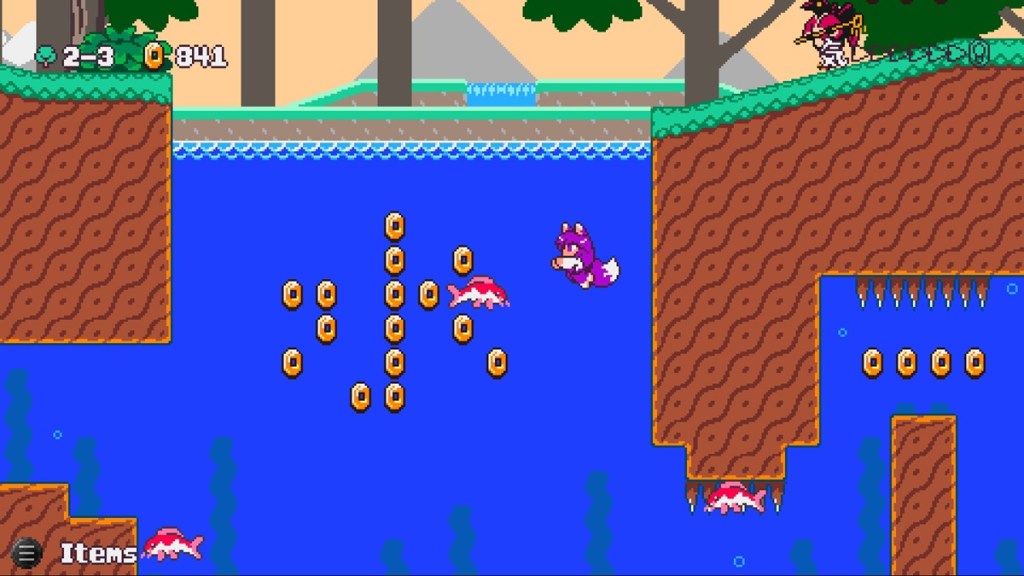
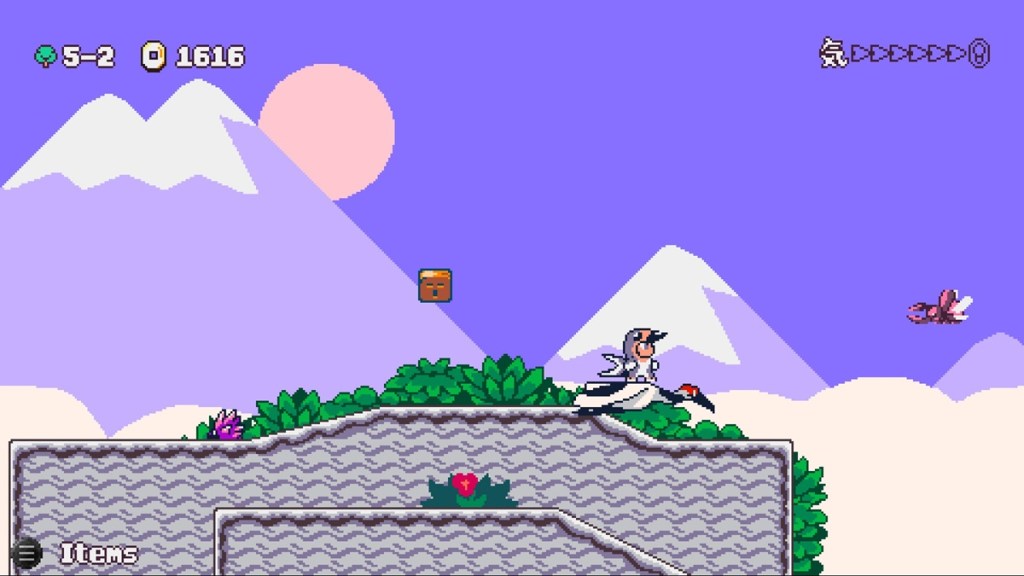
As a rule of thumb, I try to avoid comparing titles I review with other games as much as possible, as I prefer to explain the inner workings of a game on its own merits. However, there is too much of Super Mario World in Kitsune Tails. I think that my feelings towards the first half of this game come from how derivative it feels from this formula. For a good chunk of the game there is little variation to how enemies and power ups work compared to Mario, and when Kitsune Tails tries its own spin on a classic Mario mechanic it is often not to the best results. As an example, salamander and snowman suit power ups very similar to the ice flower and the fire flower from Mario games get introduced very late into the game. This means that the early game leaves you with your basic jump to fend off enemies and more situational power ups that don’t feel as useful or critical for that part of the game.
Similarly, the aforementioned Ghost Houses include ghost enemies similar to Boos. While they are similar to Boos these ghosts act differently, and you’re only safe from them as long as you’re inside the light of nearby fires. While I appreciate the variation in design, it’s not as balanced a threat as Boos, as these ghosts usually hover around your last position and there is no way to stop them unless you have a source of light, making them feel more unfair. Coupled with the fact that these enemies appear on levels with moving platforms or vertical levels, it makes for some of the most tricky in the game.
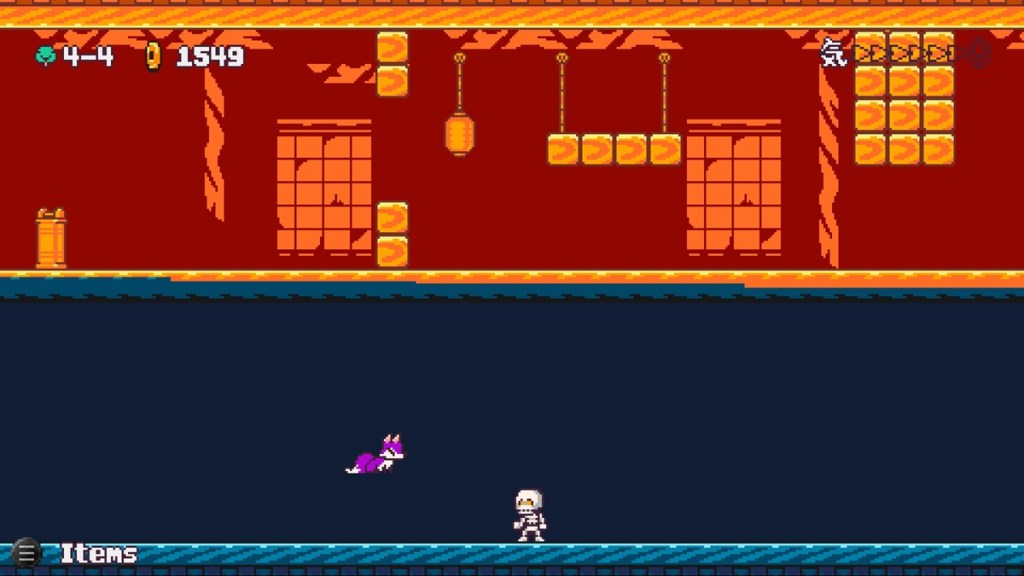
Aside from enemies and power ups, the demanding level design is definitely a step up from your average Mario game. Some levels are short and sweet and manage to scratch the itch for that platforming goodness Kitsune Tails is so eagerly and lovingly trying to recreate, while other levels go on for too long, feeling like two challenging levels stitched together. The frustration of very long challenging levels can be increased when checkpoints are sparse, making you start from very early into the level after dying. This is only really a problem when playing on the highest difficulty, or playstyle as the game calls it, as you can easily use power ups stored in your inventory to replenish your defenses in the other 2 available playstyles. Additionally, you can spend coins in the small hub village to purchase power ups.
Despite my criticisms, some levels shine through their creativity and fun design. I found the entirety of World 4 to be brilliant and a breath of fresh air. Having access to the ice power up means that you can stun nearby enemies and create platforms to make your way up very fun vertical sections. This felt like an appropriate level of challenge, as I had an effective way to defend myself without the game pulling any type of “gotchas” on me. Not to mention that what I have described above is only true for half of the game’s run, as you make your way through the 6 worlds in offer.

After completing the game, you are given access to a special character that can’t use the power ups that Yuzu can. Instead, this character has a completely unique moveset that revolves around swordplay, hitting enemies to refresh traversal attack skills, and flowing through the levels swiftly and precisely. This second part of the game absolutely, positively, immensely rules. I couldn’t stop myself from playing once I reached this point. Even though you go through the same levels again, the difficulties I previously had in some levels disappeared as the new playstyle instantly clicked with me.
I think this unique playstyle is what makes this second half so special, and I would have liked to see Yuzu play in a more unique way than Mario, with her power ups being something she learns in each world and can use with a different degree of freedom. I kept thinking about this when I unlocked the adorable shark suit power up, and how I would have preferred if it was an innate ability in the character’s arsenal, as it would have made the water stages fairer, in addition to helping the game distinguish itself more from Super Mario.
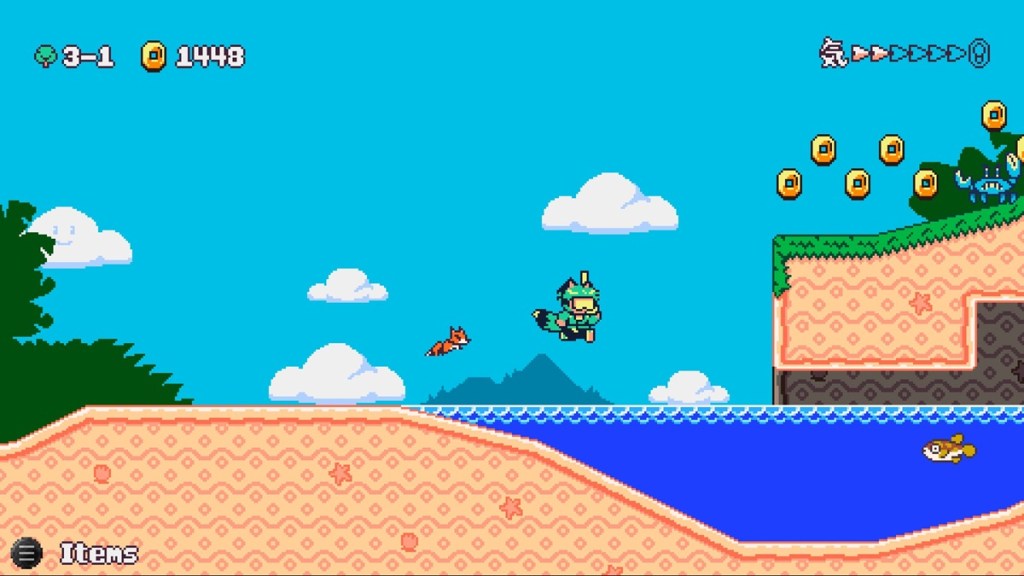
The pixel art in Kitsune Tails is as lovely as you’d expect, and every character and enemy have distinct designs that are easy to clock, even if you have never encountered before. Walking and flying beetles are the equivalent to Goombas and their flying variations, with armadillos being akin to Koopa Troopas, and so on and so forth. The music is fun and playful, borrowing from the style of the NES and Super Nintendo. Perhaps the most impressive element of Kitsune Tails is that the game also includes its own “Kitsune Maker,” featuring a level editor using the Lua script language used to develop the game, as well as the plenty of minigames available.
Kitsune Tails presents itself as a charming homage to classic NES and SNES era platformers with an adorable Queer story, and hides underneath a deep and challenging double album of platforming goodness with a second campaign focused on speed and precise movement, all the while featuring a simple level editor to boot. Despite borrowing a little too much from some classic platformers, I feel like genre fans and speedrunners are going to have a field day with Kitsune Tails.
Kitsune Tails will come to the PC via Steam and itch.io on August 1, 2024.
Kitsune Tails
Kitsune Tails is a challenging and precise platforming game featuring an adorable Queer story about friendship and love.
Pros
- The minigames are a great way to get money to purchase power ups from the village main hub.
- The voice acting is a nice addition, but it feels so odd experiencing Mario style characters being voiced.
- I'm still not sure what the second character's ninja suit power up does, but it looks super stylish!
PC version reviewed. Review copy provided by company for testing purposes.